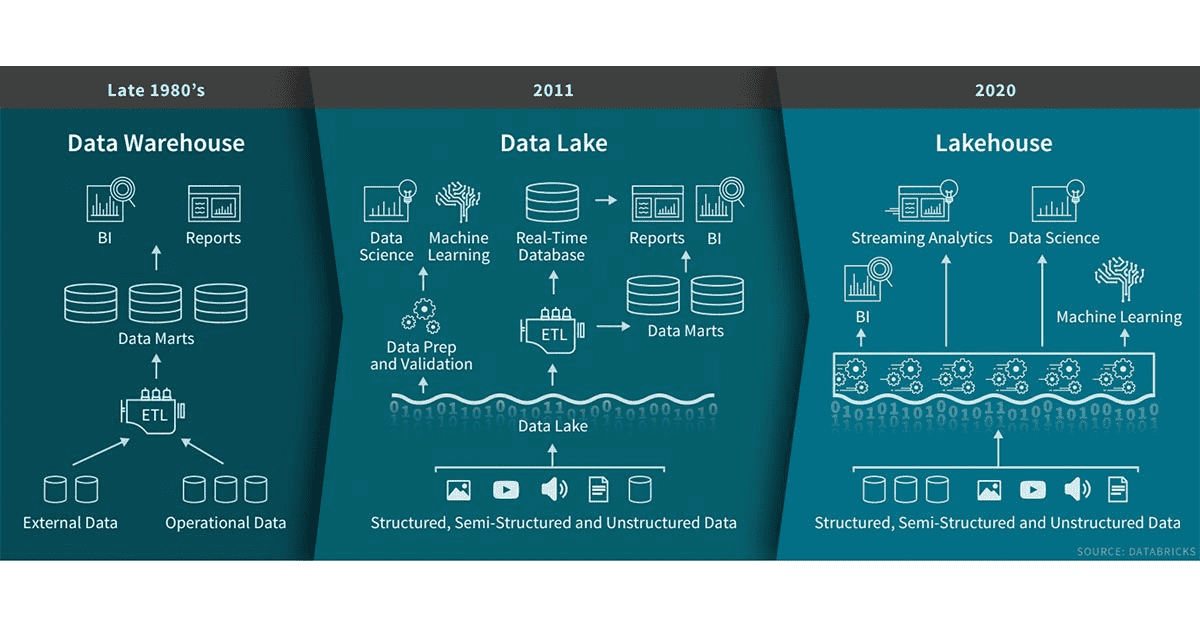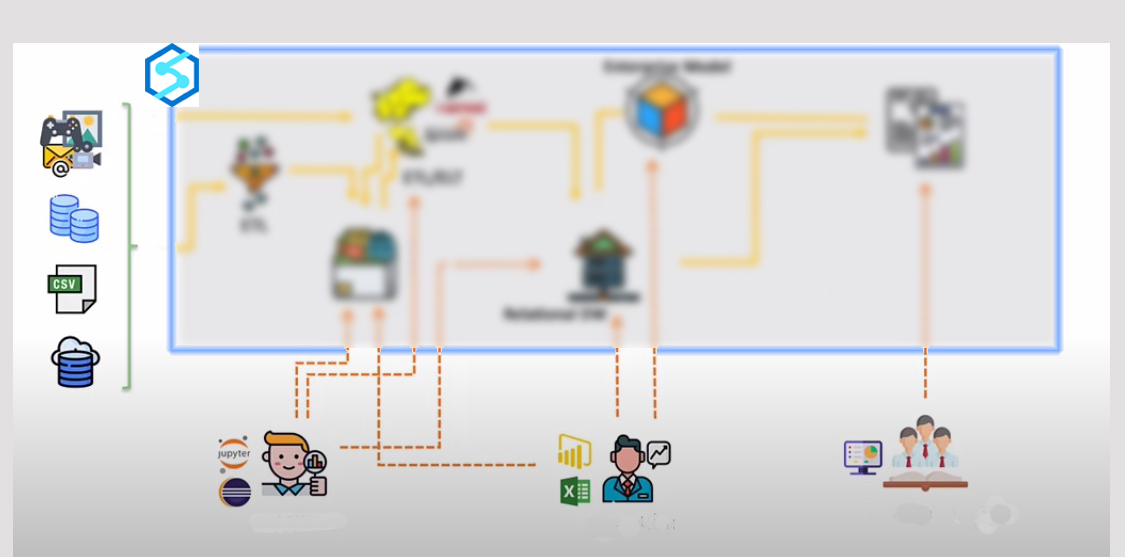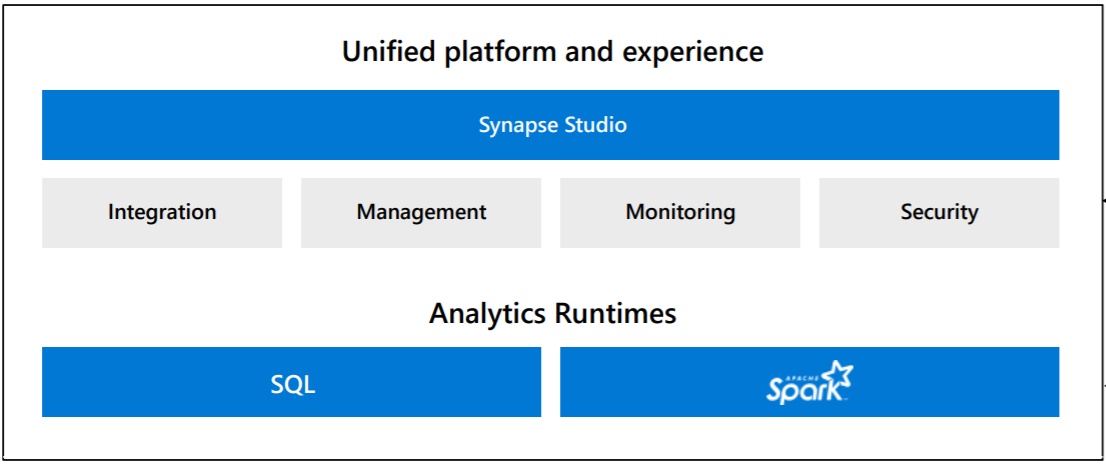let’s first try to understand what is Data Warehouse and Data Lake and understand will Data Lake & Enterprise Data Warehouse (EDW) coexist?
Data Warehouse
Data Warehouse (DW) is process for collecting and managing data from varied sources to provide meaningful business insights. A Data warehouse is typically used to connect and analyze business data from heterogeneous sources.
In the early days of data repository, a data warehouse (DW or DWH), also known as an enterprise data warehouse (EDW), is a commonly known system used for reporting and data analysis and is considered a core component of business intelligence, Extract transform load (ETL). They store current and historical data in one single place.
Data Lake
A data lake is a centralized repository that allows you to store all your structured and unstructured data at any scale. You can store your data as-is, without having to first structure the data, and run different types of analytics from dashboards and visualizations to big data processing, real-time analytics, and machine learning to guide better decisions.
Data Lakes compared to Data Warehouses:

Data Lake & Data Warehouse coexist?
The answer is yes. We call this new emerging pattern as a cloud lakehouse, bringing the best of data warehouse and data lake altogether.

What is a Cloud Lakehouse?
New systems are beginning to emerge that address the limitations of data lakes. A lakehouse is a new, open architecture that combines the best elements of data lakes and data warehouses. Lakehouses implementing similar data structures and data management features to those in a data warehouse, directly on the kind of low cost storage used for data lakes. Some highlighted benefits includes:
- Schema enforcement and governance
- Support for both structured and unstructured
- Storage is decoupled from compute
- End-to-end streaming
- Transaction support
- AI + BI support
What is Azure Synapse Analytics?
Microsoft’s Azure Synapse Analytics service, which enables a similar lakehouse pattern. Azure Synapse Analytics service is the de-facto service for combining data warehousing and big data analytics. And the Azure Synapse Workspace is providing an unique experience by unifying various components into a common user friendly interface.

First try to understand different Data Warehouse solutions
let’s try to understand the traditional way we have been processing data and then let’s see how we convert the whole thing into the modern way implementing modernized data solutions specifically in cloud or Microsoft services or what sort of azure services we use for implementing various parts of our data solution and at the end let’s see how we can use azure synapse for implementing the same.
Solution 1: Traditional way

- First Layer we have multiple structured sources like standard OLTP databases, cloud databases, csv file, excel files and some of unstructured sources like logs messages, sensor data, json, avro etc. These all input sources can be loaded into the system.
- Next Layer we create relational data warehouse.
- To load the data into data warehouse we generally use ETL (Extract Transform Load). ETL load the structured data into the Relational DW and ETL/ELT we use Hadoop and Spark to load the structured or unstructured data into the Relational DW.
- Sometime to cater the end user (serving layer) requirements we might create another repository let’s say it’s a file share or it’s just a folder that contains some set to raw data.
- Next we create cubes nowadays we call these cubes as enterprise models you can use various components for creating this enterprise model this is actually a multi-dimensional database which is an optimized data structure for performing analytics.
- Next Layer is serving layer basically of information consumers to consume the created data in the way of Relational DW or Modes.
- users can get data based on their requirements so user can connect with the file share or the folder that have been created for storing raw data or they can get data from relational data warehouse as well can connect with relational data warehouse or the enterprise model.
Solution 2: Modern way (by use Azure Cloud services)
In the below image we have highlighted are for cloud services which are segregated from first and last layer. First layer has no change, it just has input data and last layer also has no change it just serve the data to information consumers.

- Middle Layer we create relational data warehouse by using Azure Cloud Services.
- To load the data into data warehouse we generally use ETL (Extract Transform Load) like Azure Data Factory or SSIS package . ETL load the structured data into the Azure sql Data Warehouse (Relational DW).
- ETL/ELT we use Azure HD insight for Hadoop and Spark or use Azure Databricks to load the structured or unstructured data into the Azure sql Data Warehouse (Relational DW).
- Sometime to cater the end user (serving layer) requirements we might create another repository let’s say it’s a file share or it’s just a folder that contains some set to raw data we can use Data Lake.
- Next we create cubes using Azure Analysis Services nowadays we call these cubes as enterprise models you can use various components for creating this enterprise model this is actually a multi-dimensional database which is an optimized data structure for performing analytics.
In this Modern way by using Azure Cloud Services. Which has all the azure services/components like data lake, sql data warehouse, data factory, azure databricks.
- everything has to be managed maintained separately.
- handle security you need to handle security with each and every service
- integration you need to configure each and every component to make sure that each component integration works fine
Solution 3: Azure Synapse Analytics
As we understand in Solution 2 if we move to cloud then we need to managed the maintenance, security and integration for each and every services separately. As we involve more services complexity and management of your architecture become hard need to maintain so many things.
So what if Azure give you a single environment which has all of these things that’s where you can see Azure Synapse Analytics.
A single environment you can consider as a workspace which has components for implementing your modern data solution if you have a requirement for data warehouse solution you can use azure synapse if you have a requirement for a big data solution you can use azure synapse if you have a requirement for machine learning solution or data science solution you can use azure synapse basically it is a combination of everything you have used for implementing your data solution.

Azure Synapse definition
Azure Synapse Analytics is a limitless analytics service that brings together data integration, enterprise data warehousing and big data analytics. It gives you the freedom to query data on your terms, using either serverless or dedicated resources—at scale. Azure Synapse brings these worlds together with a unified experience to ingest, explore, prepare, manage and serve data for immediate BI and machine learning needs.
Azure Synapse High-Level Architecture
Azure Synapse is an integrated analytics service that accelerates time to insight from all data at any scale across data warehouses and big data analytics systems so you’re not going to have two separate environments one for data the housing one for big data analytics you have one environment you’ll be managing the whole thing as a single environment and you will see data warehouse components with it you will see big data components with it.

Next ?
Planning to create multiple blogs episodes on azure synapse covering various areas related to azure synapse and showing you the way of using these services for implementing your data warehouse solution.

Comments